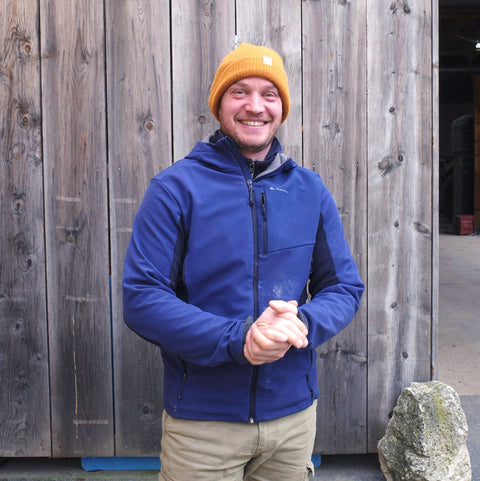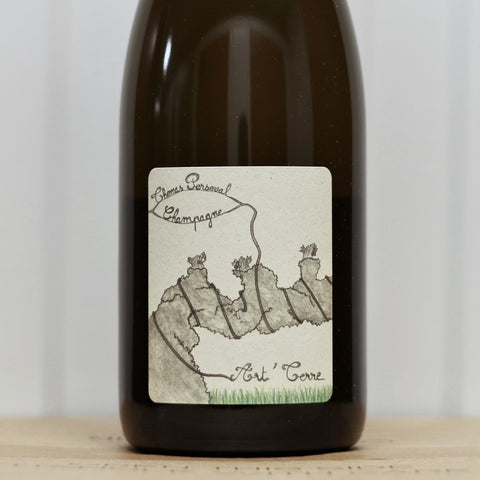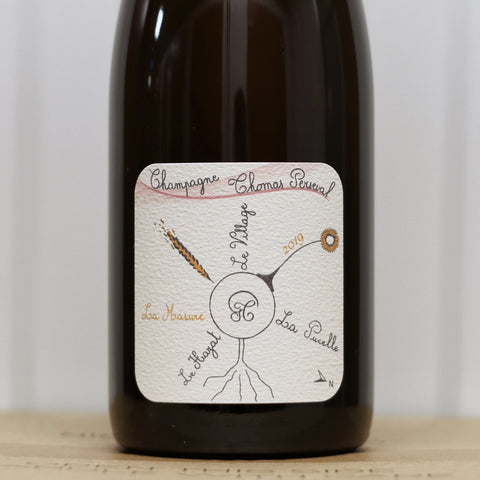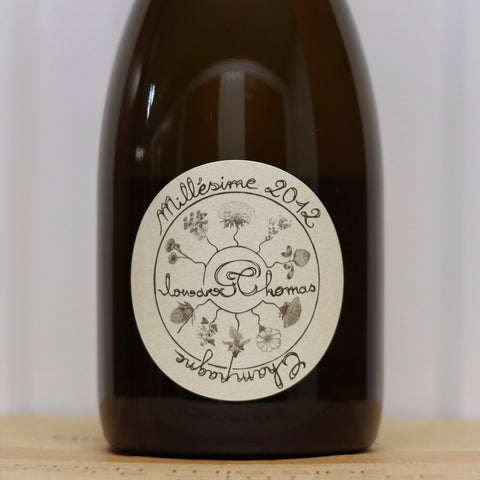
Thomas Perseval | Champagne
Thomas Perseval is one of the most unassuming people we have ever met, a modest jovial man, and a true farmer.
Indeed, Thomas comes from generations of cereal croppers who, apart from the fields of grains, also own 2.5 hectares of vineyards. The Persevals had been selling their grape harvests to local cooperatives for the longest time, but in the early 1980s, Thomas’ parents began wanting to have their own Champagne domaine which would be focused entirely on quality. They purchased a traditional wine press and began estate-bottling their harvest juice under the name of Champagne Perseval-Harteel.
Thomas’ parents soon discovered the imperative of ecology-driven viticulture behind quality fruits. In the 1990s, they began ploughing between the vines and leaving natural cover crops between the rows in order to restore the balance of the soil. An inroad into organics ensued.
When Thomas joined his family cereal farming business, he was determined to take his parents’ effort further. He apprenticed to learn the craft of a full-fledged wine-grower and returned home after an internship with a biodynamic Burgundy vigneron. By this point, he was certain that a completely natural farming approach would be instrumental for getting the maximum individual expression for his wines. He embarked on an organic conversion process in 2009 which culminated in full certification in 2012, updated his family domaine and put his name on the label.
Thomas’ vineyards spanned across five tiny parcels in the premier cru village of Chamery, a 30-minutes drive west of Reims. The oldest vines at the domaine were planted in the 1960s during his grandparents’ time. The soils are clay, sand, and silty limestone — in various proportions.
The expression of individual vineyard character is the focus of Thomas’ creative process and so every plot is vinified separately. “I have started to make single-vineyard wine because I wanted my vineyard work to make the wine, not the work in my cellar,” he says.

Each wine undergoes full malolactic and is aged in individual barrels for at least nine months before the final on-lees fermentation and ageing in the bottle. Thomas puts the same parcel in different types of barrels of varying ages. He believes that each barrel exposes different attributes of the terroir so that when they are eventually put together, a more descriptive wine would emerge. With the exception of the Art’Terre, all his champagnes are now single-parcel cuvées named after each lieu-dit.
Chez Thomas Perseval, sulphur addition is homeopathic at best, if at all used, and dosage is totally avoided. Every bottle is disgorged by hand.
Every cuvée from Thomas Perseval is breathtaking; it is no secret that we are his biggest fans. They are bone dry yet buffered by plenty of sap, laser sharp in its definition, all sumptuous and complex, held together in perfect balance with gravity-defying energy. This otherworldly sense of presence may portend a certain cult status in time to come, but right now, while they are still too rare to be found, we can — and should — enjoy them for the life affirming joy they bring. After all, is that not what a great Champagne is all about?






